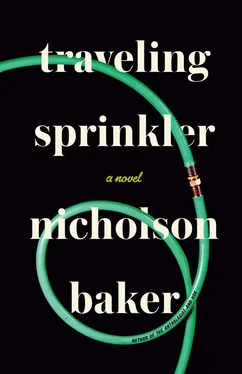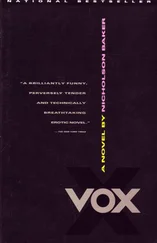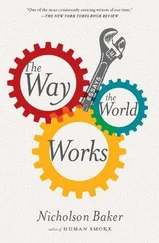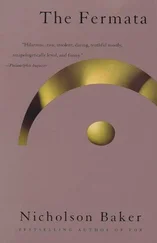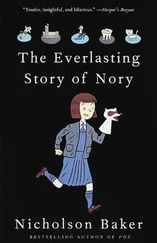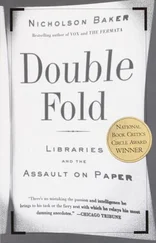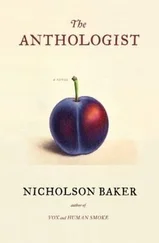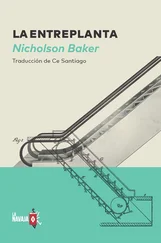Nicholson Baker - Traveling Sprinkler
Здесь есть возможность читать онлайн «Nicholson Baker - Traveling Sprinkler» весь текст электронной книги совершенно бесплатно (целиком полную версию без сокращений). В некоторых случаях можно слушать аудио, скачать через торрент в формате fb2 и присутствует краткое содержание. Год выпуска: 2013, Издательство: Blue Rider Press, Жанр: Современная проза, на английском языке. Описание произведения, (предисловие) а так же отзывы посетителей доступны на портале библиотеки ЛибКат.
- Название:Traveling Sprinkler
- Автор:
- Издательство:Blue Rider Press
- Жанр:
- Год:2013
- ISBN:нет данных
- Рейтинг книги:3 / 5. Голосов: 1
-
Избранное:Добавить в избранное
- Отзывы:
-
Ваша оценка:
- 60
- 1
- 2
- 3
- 4
- 5
Traveling Sprinkler: краткое содержание, описание и аннотация
Предлагаем к чтению аннотацию, описание, краткое содержание или предисловие (зависит от того, что написал сам автор книги «Traveling Sprinkler»). Если вы не нашли необходимую информацию о книге — напишите в комментариях, мы постараемся отыскать её.
Traveling Sprinkler — читать онлайн бесплатно полную книгу (весь текст) целиком
Ниже представлен текст книги, разбитый по страницам. Система сохранения места последней прочитанной страницы, позволяет с удобством читать онлайн бесплатно книгу «Traveling Sprinkler», без необходимости каждый раз заново искать на чём Вы остановились. Поставьте закладку, и сможете в любой момент перейти на страницу, на которой закончили чтение.
Интервал:
Закладка:
So the stave, or staff, is simply five lines of wooden framing onto which you hang the notes for the sake of convenience. And the really confusing thing is that middle C is not located in the middle of the stave, it’s below the stave. Middle C is a key next to two black keys roughly in the middle of the piano keyboard. It’s the center of everything and yet perversely it’s represented as a note below the first line of the staff, or stave — a note with a little line through it to signal that there’s a virtual line below the five lines, so that it looks like a flying saucer.
And then there are bar lines — vertical lines that neatly cross the stave every so often. They form measures, which are little aquariums of time in which the notes must forever swim. At first there were no bar lines, because the choristers figured that all you needed to know was the tune. If you’re singing a monkish chant you just need to be reminded of the tune. But then they began working out a code for longer notes and shorter notes — shorter notes were black blobs and longer notes were open blobs that weren’t colored in — and then they resorted to fiddling with the tail of the notes, so that some notes were so-called quarter notes, which were very important because they fell on every beat, and they had upsticking or downsticking single tails, while eighth notes had curvy spinnakers off their poles and if they joined up with other eighth notes they were united by angled bars between their poles as if they were going by too fast to stand on their own, and sixteenth notes had a second droopy thing, or a second connecting bar. The angled bars that connect notes are different from the vertical bar lines that separate measures — very confusing. I’m falling apart here.
Another oddity of nomenclature: A piano key is a physical object that is different from the key, or “key signature,” that the music is in. A piece of music may be in the key of C major but the melody might begin on the D key or the E key or any key at all. Debussy called the piano a “box of hammers.” “The Sunken Cathedral” is in the key of C major, more or less.
But the main thing to keep in mind is that the melody, or tune, the hummable essence of a song, is like a thread that is wrapped around various doorknobs in a large ornate eighteenth-century room of harmony designed by an architect named Rameau, and the knobs of harmony are made up of groups of constitutive notes called chords, and each chord has a little positive or negative ionic charge in it that moves things forward with colorn;;;;;”“’n
I seem to have fallen asleep.
• • •
JEFF THE BARN MAN and two of his guys showed up first thing in the morning, and we set up a ladder and a bucket brigade and started rescuing the boxes and putting them in a back part of the first floor of the barn where the crossbeams had several upright supports. By the fiftieth book box Jeff said, “I think I’m getting a better sense of why the floor collapsed.” A carton of my family letters had broken open — postcards from uncles and aunts, and birthday wishes, and a “Dear Grandmother and Grandfather” thank-you from me, in blue felt-tip pen, for the Mediterranean cruise. “The Parthenon was ineffable,” I’d written. I remembered my mother suggesting the word to me when, sitting at the kitchen table, I’d asked her for something that meant “mysterious.”
One of my three traveling sprinklers had its sprayer arms mangled, but my father’s original Sears model was in fine shape. And, miraculously, his collection of plastic packaging, egg cartons and foam clamshell boxes and appliance-cradling abstract shapes of Styrofoam, was completely untouched — stretch-wrapped in clear plastic sheeting on a pallet out of range of the avalanche. The canoe, however, was totally squashed. “Yep, I’d say you’re not going to get very far in that,” said Jeff. I dragged it out onto the grass and swore and took a picture of it to email to the Allstate man.
One lucky thing: I found my silver and blue paperback copy of Howard Moss’s Selected Poems , which I’d been looking for for years. It had somehow found its way into a U-Haul box with some very old, very fat New Yorker s. The box burst, and there was the Howard Moss paperback. On the back of the book was a blurb from James Merrill: “Over the years Howard Moss has arrived, with next to no luggage, at mastery.” Inside was an ancient, faded dot-matrix-printed receipt on stiff paper from a cash machine operated by the Bank of New England: on June 7, 1980, I withdrew sixty dollars. Where are those dollars now? Gone to graveyards every one.
Jeff said he would write up an estimate for the floor repair, but he said that five thousand from Allstate would certainly cover it. The three of them drove off, their pickup trucks filled with broken planking. I took Smack for a walk and gave him a liver snack, which made his morning, and then I went out for breakfast at the Friendly Toast. The box lifting had made me hungry and I ordered the Irish eggs Benedict, made with corned beef hash instead of a circular disk of ham. Then, for the first time in more than thirty years, I read Howard Moss’s poem “Piano Practice.” I’d forgotten how observant it was. “The left hand’s library is dull,” Moss says, “the books / All read, though sometimes, going under velvet, / An old upholsterer will spit out tacks.” That’s very true about the low register of the piano. Partway through, Moss has an underwater stanza about Debussy, which unfortunately ends on a less good note about how the deep-sea mirrors “eat their hearts out.” Scratch that — I even like Moss’s mirror image now. It’s all done in a loose-seeming pentameter, with a great deal more enjambment than is healthy, but never mind the meter: you can practically hear the ice cubes in Moss’s scotch glass tinkle as he’s writing — writing and listening through layers of lath and plaster to his neighbor the industrious student musician.
I remember how glum I was after reading “Piano Practice” for the first time all those years ago. I’d been working on and off for a year on a poem about piano playing, trying to describe the mingled sounds I heard coming from the practice rooms while I waited for my reed to soak, and Howard Moss’s poem made mine superfluous. Now, though, his poem only made me happy.
Twenty-two
RAYMOND’S GOT GENUINE MUSICAL TALENT — I’ve got his “beans in my jeans” song running through my head.
I’m sitting on a wet beach towel in the car with raindrops popping away on the roof. The driver’s seat was soaked because last night I forgot to roll up the window all the way. That’s what a Fausto cigar will do to you. You crack the window to let some smoke out, then it rains all night long, and boom, your ass is wet. I think I should stop inhaling. I’ve got another beach towel draped down from the roof of the car so that more rain won’t come in the window. It’s the only thing I don’t like about this car — no gutters. Thank goodness the barn boxes are all up and safe.
The textbook I’m currently reading is by Rick Snoman, a DJ and remixer, and it’s called Dance Music Manual . It’s got 522 pages and it’s arranged like a scholastic treatise on angels and is about as helpful to an amateur musician like me as Aquinas’s Summa Theologica would be. Here’s what I’ve learned so far. There are eight genres of dance music: House, Trance, UK Garage, Techno, Hip-hop, Trip-hop, Ambient, and Drum ’n Bass. Trip-hop? House music arose in the eighties as disco was dying, Snoman writes: “DJ Nicky Siano set up a New York club known as The Gallery, and hired Frankie Knuckles and Larry Levan to prepare the club for the night by spiking the drinks with lysergic acid diethylamide.” Trance, on the other hand, started in the nineties with a song by DJ Dag and Jam El Mar called “We Came in Peace,” which repeats a single phrase from the Apollo 11 moon message several dozen times. It was intended to create a state of trance but it doesn’t seem to work — there’s such a thing as too much Neil Armstrong. The genre quickly evolved, according to Snoman: “The increased popularity of 3,4-methylenedioxy- N -methylamphetamine (MDMA or ‘E’) amongst clubbers inevitably resulted in new forms of trance being developed.” Ambient music could be traced back, he says, to a moment in the mid-seventies “when Brian Eno was run over by a taxi.” In the hospital Eno listened to some harp music while rain beat gently on the windowpane, and he liked the intermixture, and there you go. In the index to Snoman’s book, Daft Punk appears as “Punk, Daft.” Prince doesn’t appear in the index at all.
Читать дальшеИнтервал:
Закладка:
Похожие книги на «Traveling Sprinkler»
Представляем Вашему вниманию похожие книги на «Traveling Sprinkler» списком для выбора. Мы отобрали схожую по названию и смыслу литературу в надежде предоставить читателям больше вариантов отыскать новые, интересные, ещё непрочитанные произведения.
Обсуждение, отзывы о книге «Traveling Sprinkler» и просто собственные мнения читателей. Оставьте ваши комментарии, напишите, что Вы думаете о произведении, его смысле или главных героях. Укажите что конкретно понравилось, а что нет, и почему Вы так считаете.
